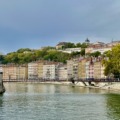Welcome to Portugal’s vibrant capital, Lisbon! Nestled on the banks of the majestic Tagus River, this enchanting city is the ideal place for a few days’ getaway. With its picturesque alleyways, steep hills offering panoramic views and rich history, Lisbon is sure to captivate you.
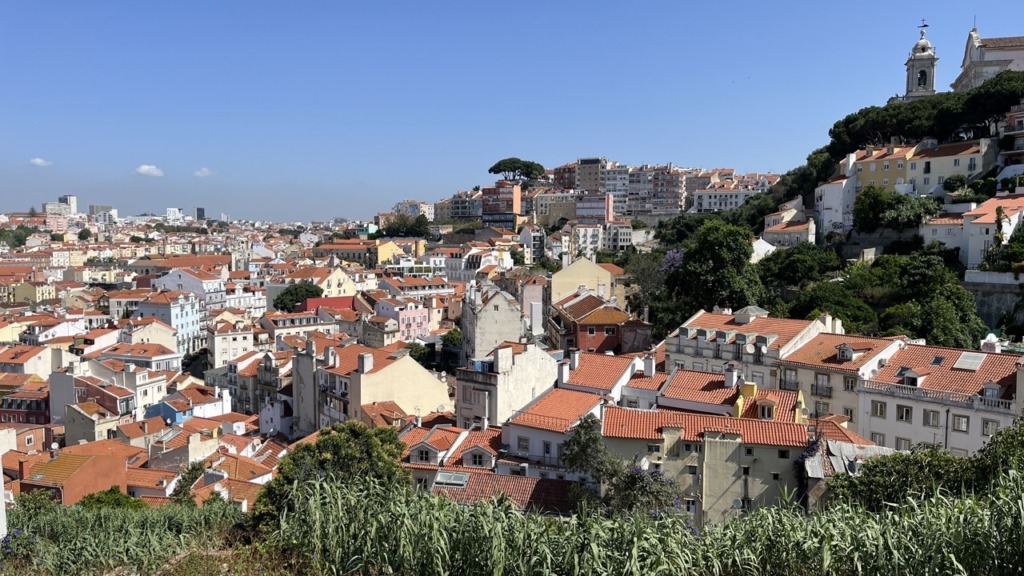
Over the centuries, Lisbon has experienced a fusion of cultures, with Arab, Roman and medieval influences blending harmoniously in its architecture and cuisine. The colorful azulejos adorning the facades of the buildings, the iconic streetcars climbing the hills and the melodious sounds of fado, traditional Portuguese music, create a unique and bewitching atmosphere.
I wrote this article after a short week spent in Lisbon in May 2023, a week in which I truly fell in love with this magnificent city.
From the majestic Belém Tower to the emblematic Alfama district, from the culinary delights of the local markets to the breathtaking panoramas from the viewpoints, I’ll try to introduce you to the city’s must-sees, and inspire you to enjoy the relaxed, warm atmosphere that characterizes Lisbon.
Day 1: Exploring historic districts and landmarks
Start your first day in Lisbon by getting lost in the charming alleyways of the Alfama district, the city’s oldest.
Stroll along the small cobbled squares, admire the houses with their colorful facades and soak up the picturesque atmosphere. Be physically prepared, as it’s not for nothing that Lisbon is nicknamed “the city of 7 hills”! Indeed, you’ll be going up (and down) a lot.
In this historic district, be sure to visit Lisbon Cathedral, which dates back to the 12th century and offers a breathtaking view of the city from its forecourt.
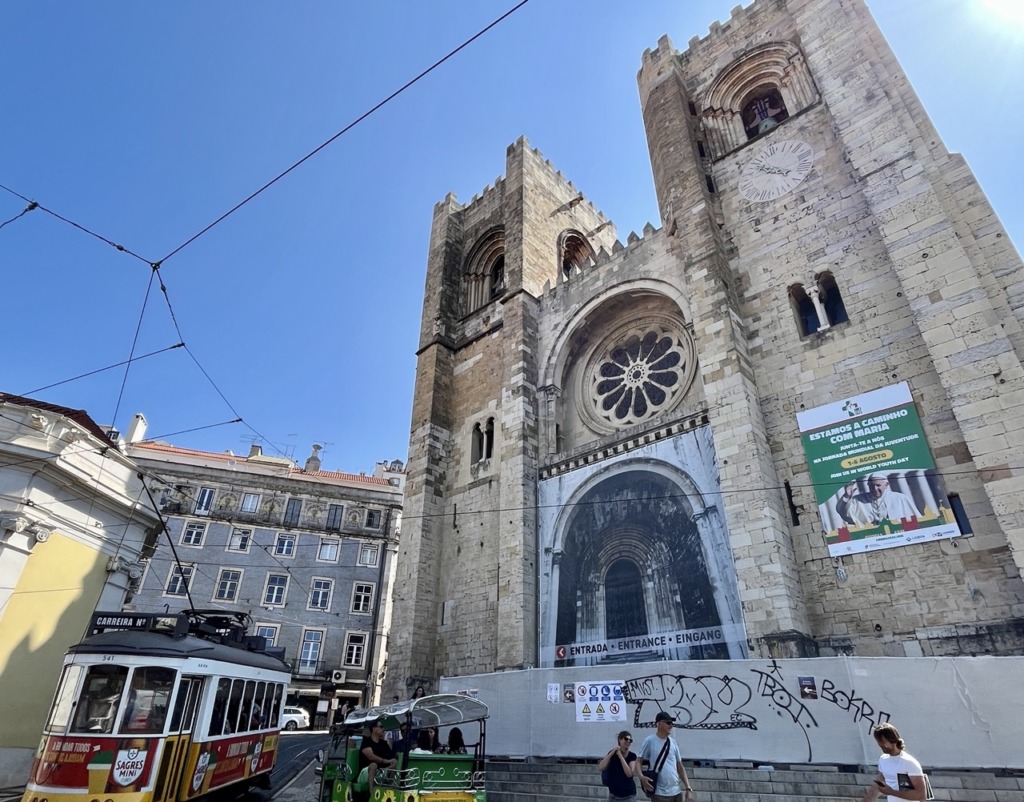
Next, stop off at Praça do Comércio, a vast seafront square that was once the city’s main entry point. Admire the triumphal arch, built to commemorate Lisbon’s reconstruction after the 1755 earthquake. You can even climb to the top for a few euros.
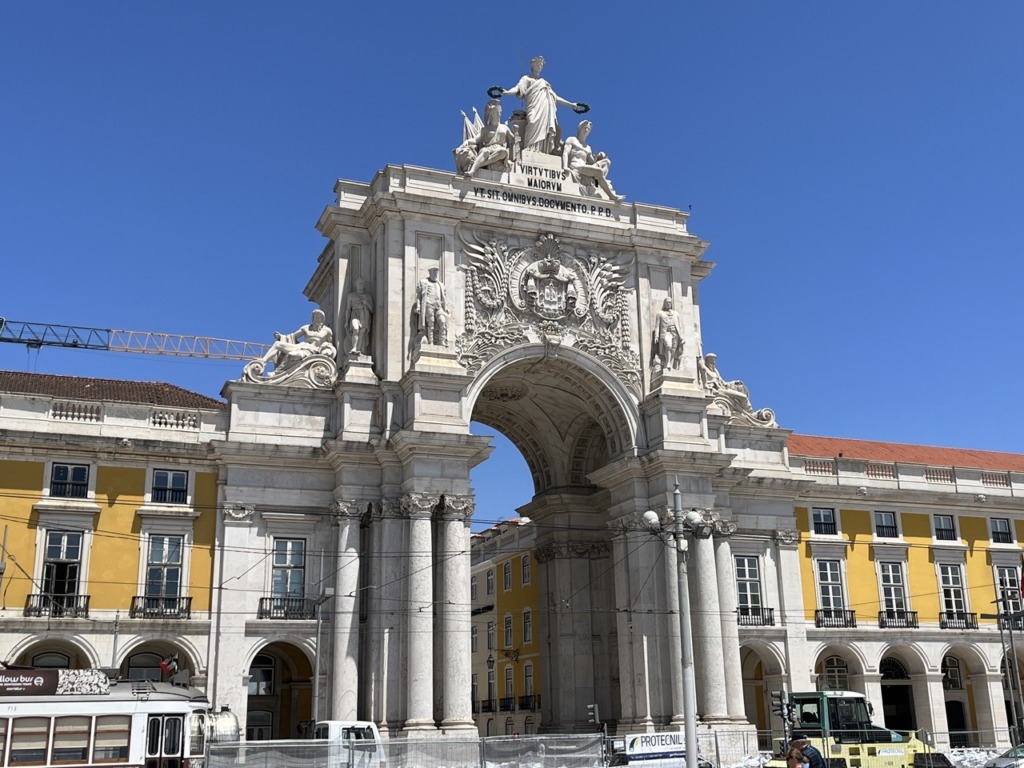
Admire the historic buildings surrounding the square, then cross elegant Augusta road to reach the Chiado district. This area is renowned for its trendy boutiques, historic cafés and the famous Café A Brasileira, once frequented by local writers and artists.
For a different kind of panoramic view of Lisbon, be sure to visit the Cristo Rei statue. To get there, take the short ferry ride from Lisbon’s Cais do Sodré station to Almada. It’s a 20-minute walk from there.
Standing 113 metres above the Tagus River, the Cristo Rei statue, inaugurated in 1959, consists of two parts. The first is a portico built by architect António Lino, 75 metres high.
The second is the 20-metre-high statue of Christ, with open arms, facing the Portuguese capital, the work of sculptor Francisco Franco de Sousa. The pedestal, including the portico, rises to a height of 82 metres, making it one of the tallest constructions in the country.
If you take the monument’s elevator (€4), you’ll have a magnificent view of the famous April 25th Bridge, inspired by San Francisco’s Golden Gate.

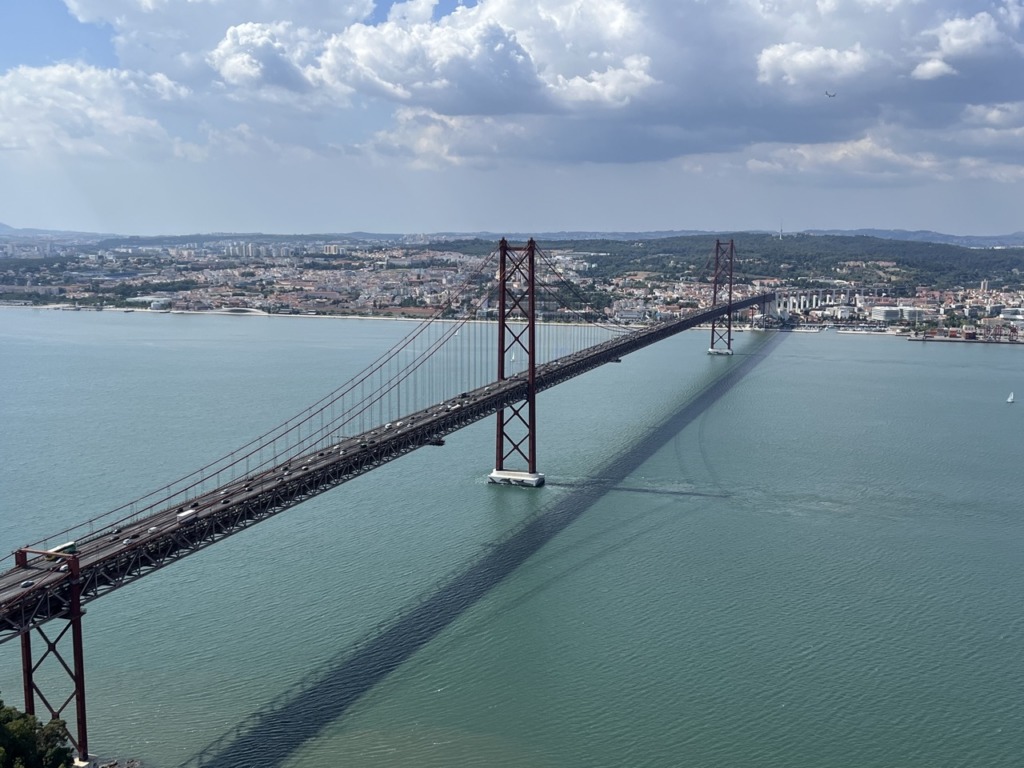
If the walk to the Cristo Rei statue seems too long, treat yourself to a cruise on the Tagus River to admire Lisbon from the water. Enjoy magnificent views of the city, iconic bridges and picturesque riverbanks. It’s also the perfect opportunity to relax and enjoy an enchanting sunset.
Day 2: Immersion in the culture and art of Lisbon
Start your second day with a visit to the Belém district, a 15-minute train ride from the Cais do Sodré station on the waterfront.
Head to the National Coach Museum, where you can admire an impressive collection of royal and aristocratic coaches dating back to the 18th century. Next, explore the National Museum of Azulejos, home to a magnificent collection of traditional Portuguese tiles known as azulejos.
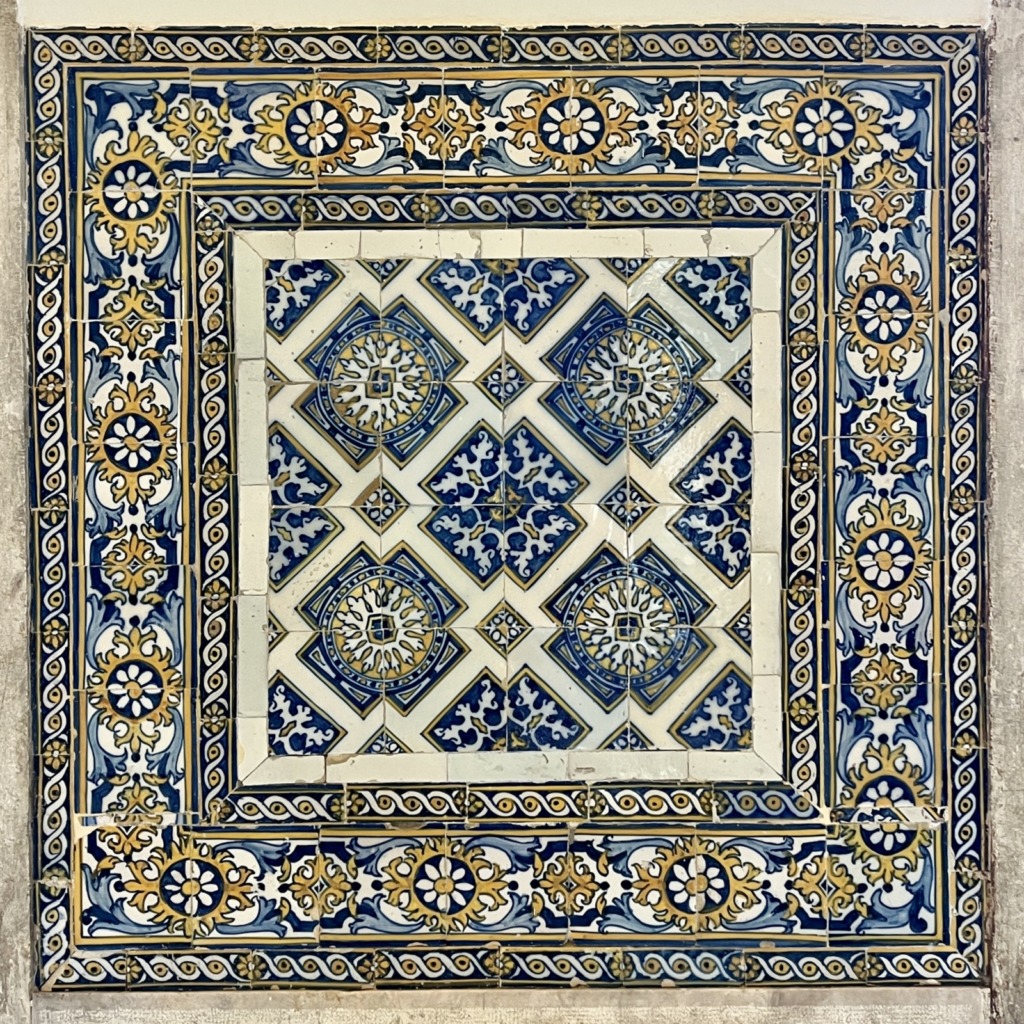
In the Belém district, you can discover two of Lisbon’s most emblematic sites, both UNESCO World Heritage Sites and testimony to the golden age of Portuguese exploration: the Belém Tower and the Hieronymite Monastery.
The Belem Tower was built between 1514 and 1519 by King Manuel Iᵉʳ of Portugal to guard the entrance to the port of Lisbon. The Hieronymites monastery was built in the same period for the return of Vasco de Gama. You can admire his tomb in the Church of Santa Maria, at the entrance to the monastery.
If you only have time to visit one of the two monuments, the monastery is a must: the finely sculpted cloister and the period azulejos are truly magnificent.
Before you leave, be sure to try the famous pastéis de nata, delicious cream pastries, at the emblematic Belém patisserie. They taste slightly different from those you can eat in Lisbon itself.
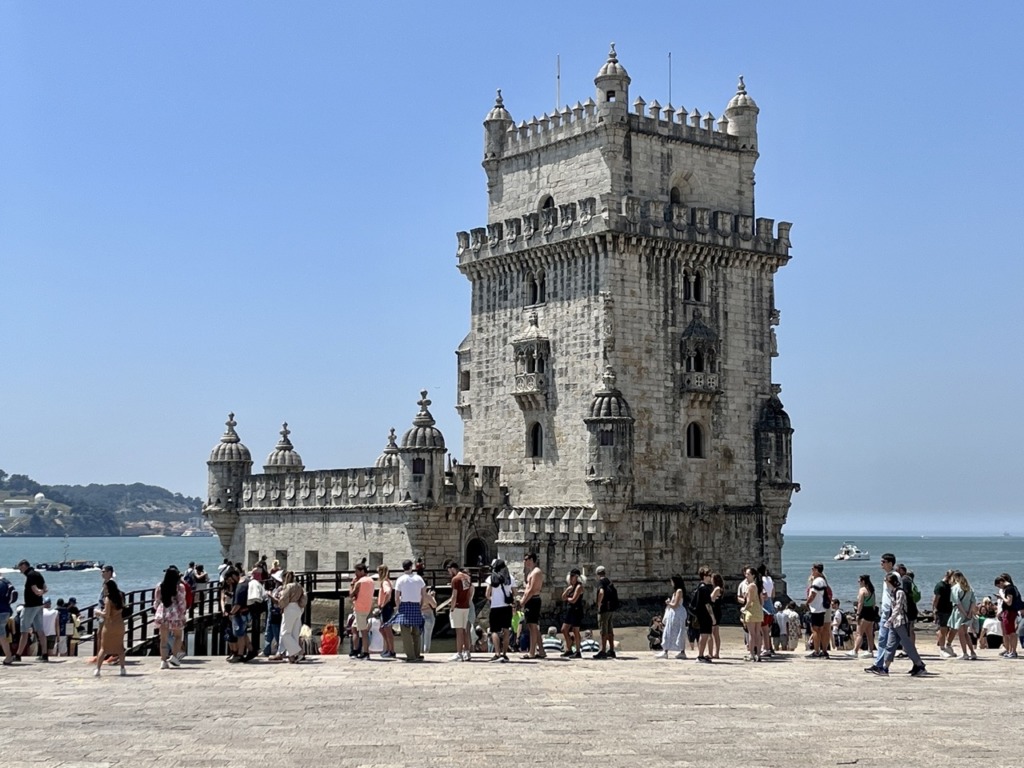
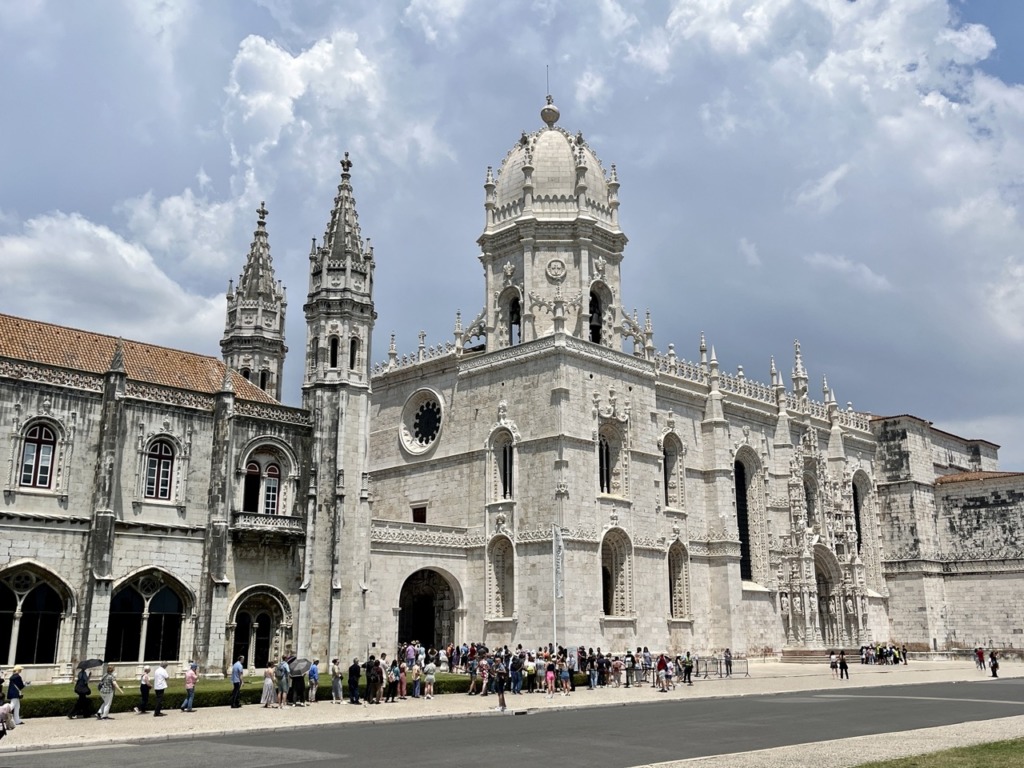
Back in central Lisbon, you can head back to the Baixa district, Lisbon’s nerve center, for a stroll along Praça do Rossio, a lively square surrounded by historic buildings.
Take the opportunity to ride the famous Santa Justa elevator. This wrought-iron structure, inspired by the Eiffel Tower and opened in 1902, offers a panoramic view of the city.
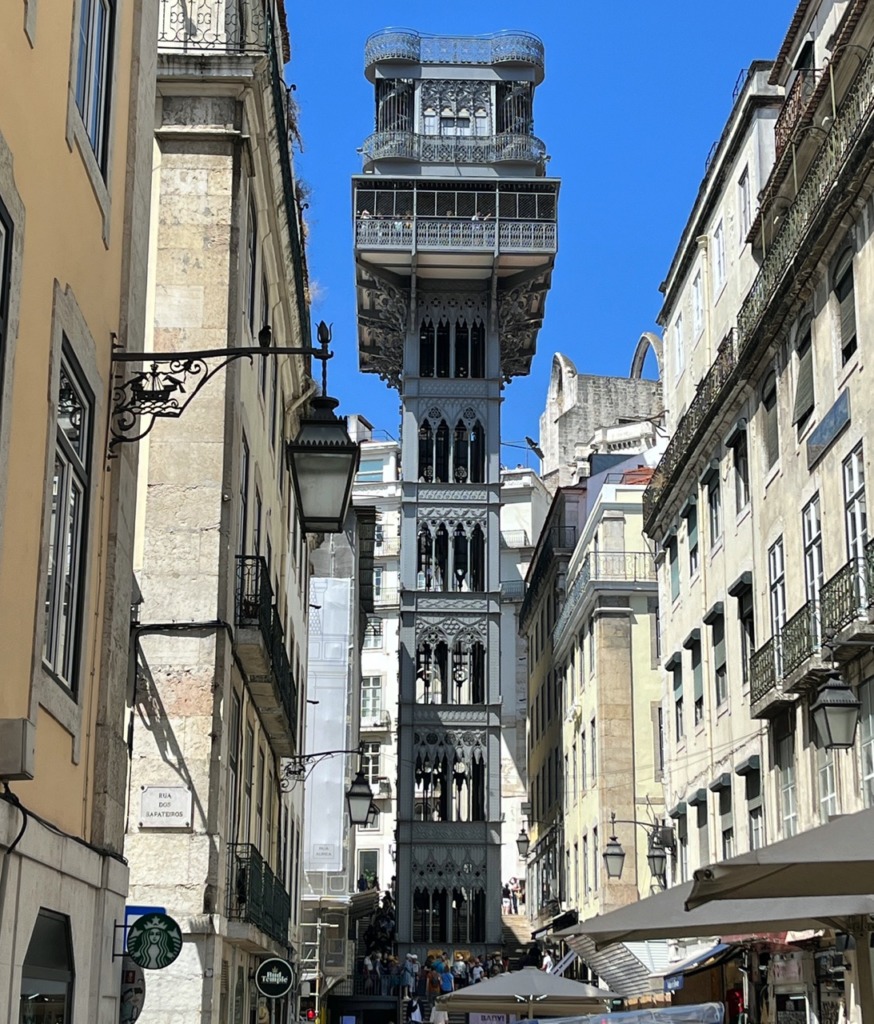

Please note that, depending on the time of day, you may have to wait a long time to use the elevator. You can also get to the top of the lift by walking around it in the streets and alleys nearby… simply… You’ll get the same view in the end!
For an authentic culinary experience, head to the Ribeira covered market (also known as the Time Out Market). Explore the colorful stalls where local producers offer a wide variety of fresh produce such as seafood, grilled fish, cheeses, fruit and vegetables. Enjoy Portuguese specialties such as pastéis de bacalhau (cod fritters) or bifanas (marinated pork sandwiches).
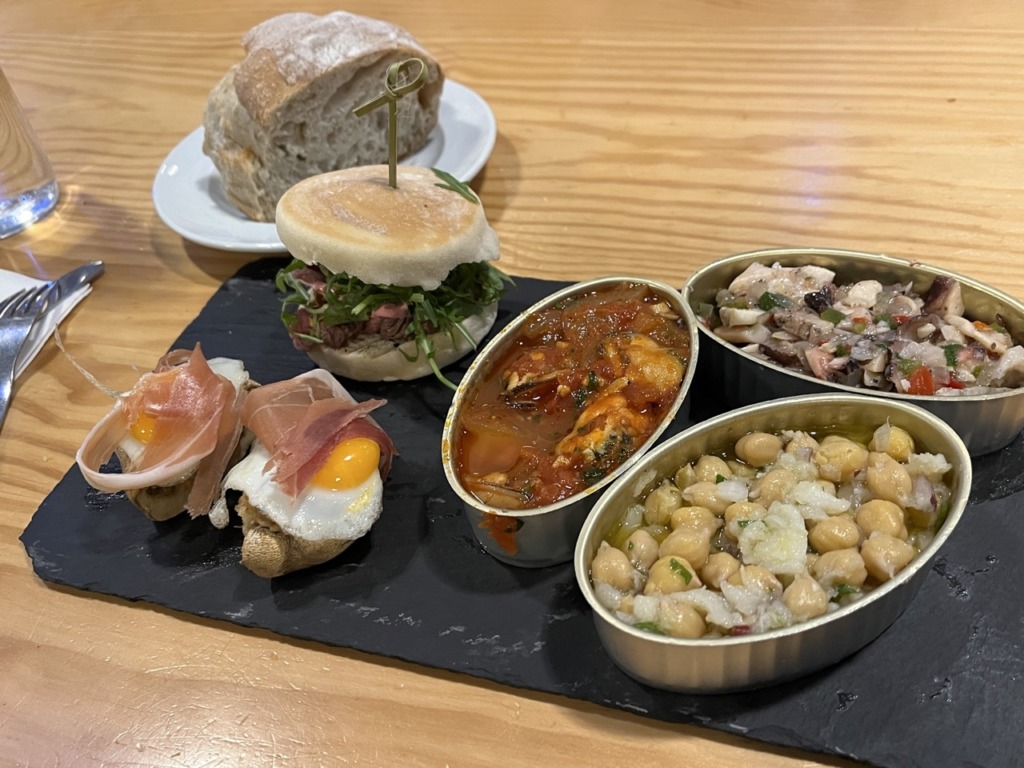


Day 3: Bohemian quarters and panoramic views
On your third and final day in Lisbon, start with a visit to LX Factory, a renovated former industrial complex now home to trendy boutiques, art galleries, restaurants and cafés. Stroll the streets, explore the concept stores and grab a coffee in one of the trendy spots in this creative space.
Afterwards, you can visit São Jorge Castle, perched at the top of the hill, from where you can enjoy panoramic views over the city and the river.
To get there, take the famous number 28 streetcar, and enjoy the ride through the city’s most beautiful districts, up to the hill where the famous castle is located…
Human occupation of the São Jorge Castle hill dates back to at least the VIIIᵉ century BC, while the first fortifications built date back to the Iᵉʳ century BC.
From the 16th to the 19th century, the castle had more of a defensive function, initiated by Portugal’s integration into the kingdom of Spain. It was then used as a prison, and left in ruins.
Recent reconstruction work has restored the splendour of this emblematic building
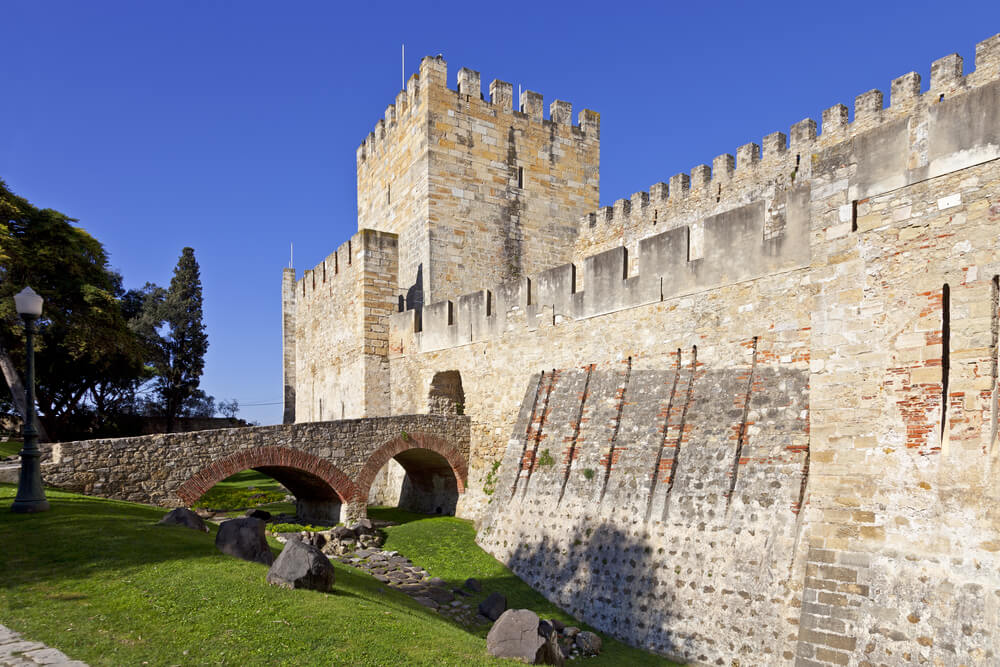
On the way back down to the city, stop off at Miradouro da Senhora do Monte, one of Lisbon’s most popular viewpoints, offering breathtaking views of the city and its colorful rooftops.
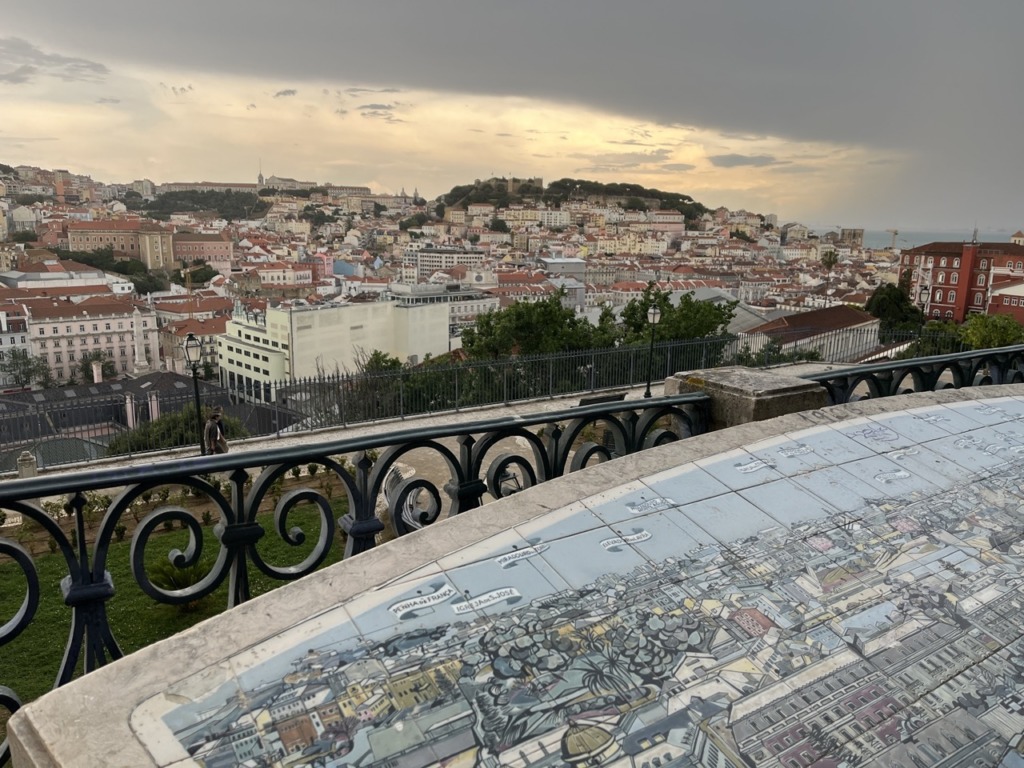
In the late afternoon, take time to relax along Lisbon’s waterfront. Stroll along Avenida Ribeira das Naus and enjoy the sea breeze while admiring the view of the Tagus River.
If you’re an art lover, be sure to visit the nearby MAAT (Museum of Art, Architecture and Technology), which features exciting contemporary exhibitions.
To round off your stay in style, and explore Lisbon in a different way, Lisbon’s Telecabine (cable cars) are an excellent option. These modern “Telecabine” offer spectacular panoramic views of the city, including the 12.3 km Vasco de Gama Bridge!
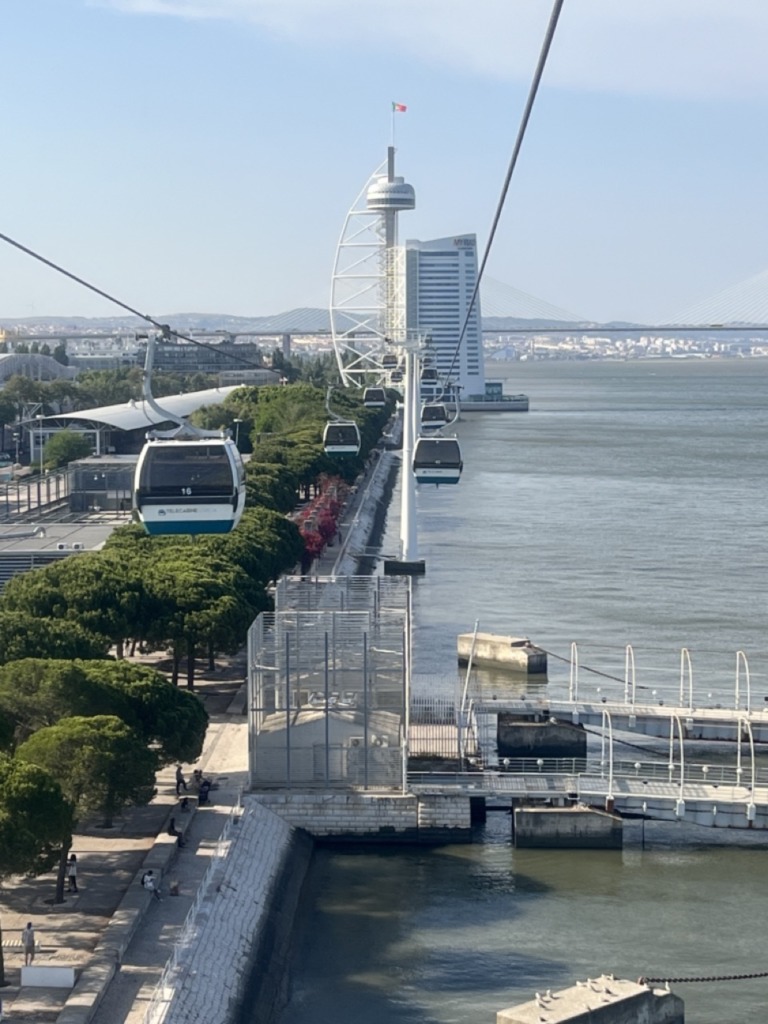
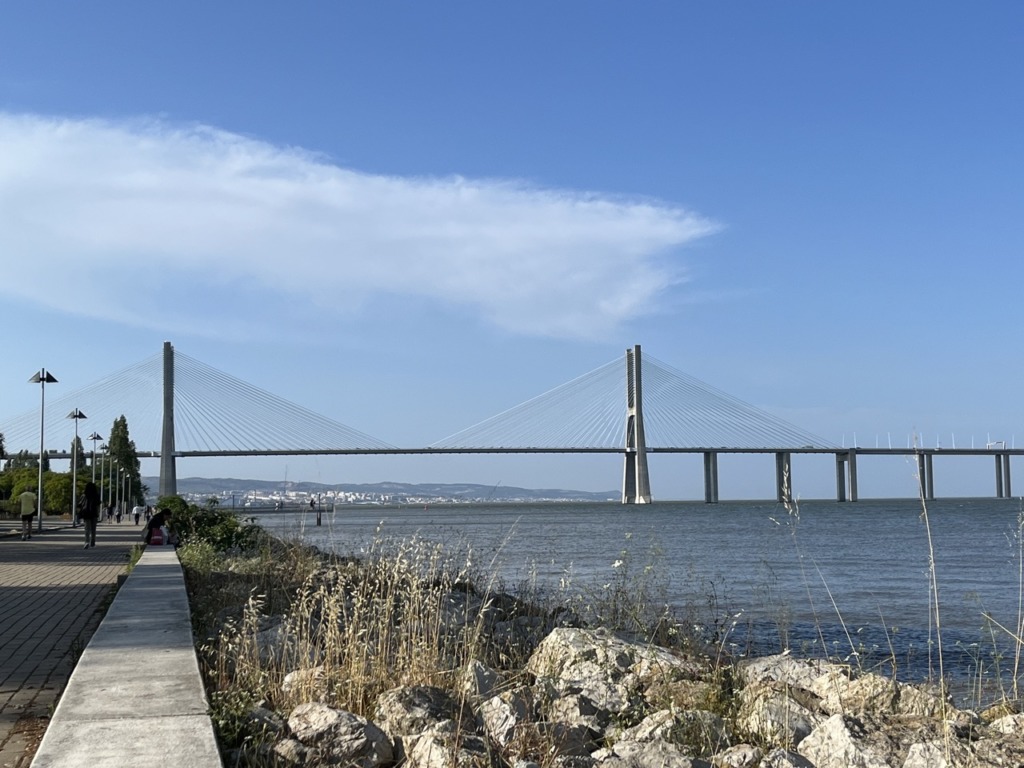
Lisbon’s cable cars are located in the Parque das Nações district, a redeveloped area along the Tagus River that is home to many interesting sites, including the Oceanário de Lisboa, the Pavilhão de Portugal and the Vasco da Gama tower.
After this original experience, you can stop off at one of the many restaurants in the Parque das Nações district to sample local specialties.
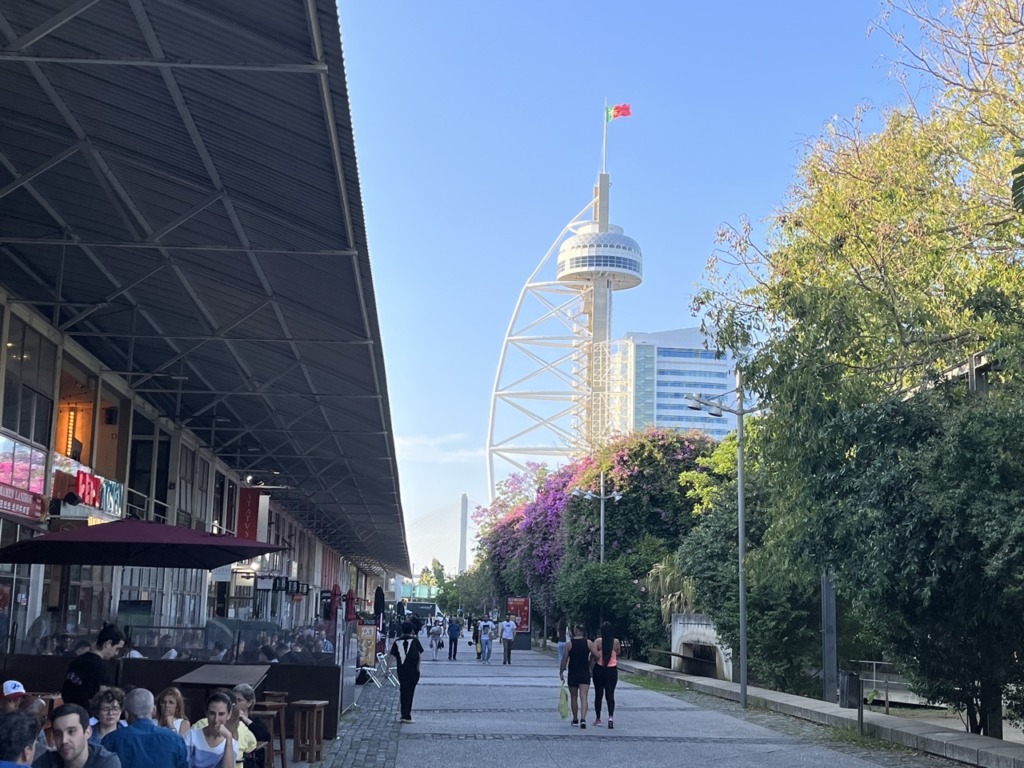
Lisbon in 3 days is an experience rich in cultural discoveries, breathtaking panoramas and culinary delights. This sunny city will charm you with its unique blend of tradition and modernity. So get ready to lose yourself in the picturesque alleyways, sample local specialties and marvel at Lisbon’s architectural treasures.
Two final tips to end this article: don’t hesitate to buy the Lisboa Card, which will allow you to access the city’s various monuments in “thread-cutter” mode!
On the GetYourGuide app or website, you’ll also find tickets for self-guided or guided tours of the city’s monuments, and even excursions to nearby towns (Sintra, Cascais, etc.).


